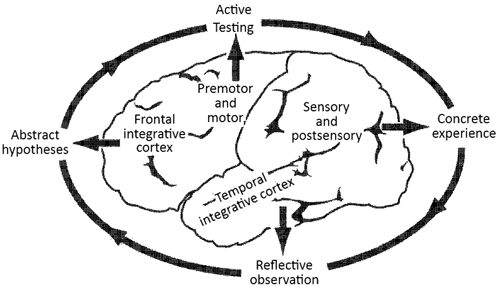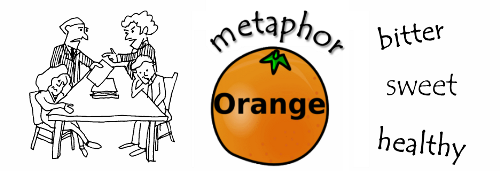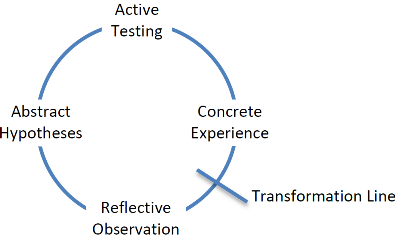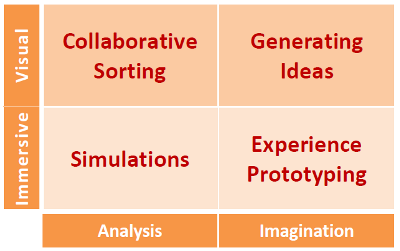
Agile Facilitation & Neuroscience: Transforming Information into Action
Cara Turner, http://facilitatingagility.com/
Khanyisa Real Systems, http://www.krs.co.za/
The face of meetings has changed fundamentally since agile coaches and ScrumMasters started including facilitation techniques into agile meeting structures. Many of us have experienced the productivity benefits of these collaborative practices first hand, so they’re hard to deny. Yet it’s difficult to put our finger on why they should make so much difference to our software development process.
At the same time neuroscience research has become increasingly popular as we try to make sense of the mysterious process of creating ideas and knowledge. As more information becomes available, there seems to be enough overlap in the research to suggest that agile facilitation really does help us make better decisions faster.
"Snake oil!" I hear you cry, but it’s all got to do with how we process information, and a lot to do with a part of the brain called the prefrontal cortex.
This article takes a look at how neuroscience supports facilitation methods, how we transform information into action, and which facilitation activities we can use to do so.
Facilitation and agile thinking
From the mid 2000’s a group of agile thinkers began to focus on collaborative practices that support self-organizing teams, with authors Jean Tabaka, Esther Derby and Diana Larsen leading the way. The facilitation field boasts a number of collaboration practices, and these have been increasingly applied to running agile meetings and Scrum ‘events’, with facilitation now being a recognized Scrum master role.
These practices include time-boxing meetings and each section within them, keeping the agenda visible, silent writing, consensus techniques, and structured collaborative methods which ensure a high level of participation throughout the meeting. Thanks to the specific agile focus on continuous improvement, a variety of activities have evolved to examine our processes and products from different perspectives.
The benefits we see
Complexity theory, Lean Thinking, Systems Thinking and even Improv Theatre all bear out the benefits of agile facilitation practices, which allow:
Dan North’s work on Deliberate Discovery also provides insight into the agile meeting flow. North describes software development as a process of overcoming a current state of ignorance by discovering new information about our product as we need it – whether that’s the feature set or how we’ll store data [1].
From this perspective we can see how the agile meeting flow supports the process of just-in-time decision-making. We explore the product needs and our available options through the various grooming activities, planning for releases and sprints, reviewing sprints, retrospecting and re-planning, to uncover the right amount of detail at the right time.
But none of this explains why facilitation methods work so well. The key seems to lie in the physical details of how we process information internally.
Agile Facilitation and Neuroscience
It’s about how we learn
Prof. James Zull is a biologist and educator who became intrigued with the process by which we learn. Through exploring various theories of learning, he encountered David Kolb’s work on Experiential Learning [2], and had the remarkable insight that from a biologist’s viewpoint, the process described by Kolb maps directly to the physical makeup of the brain. [3]
In The Art of Changing the Brain Zull describes the major activities of experiential learning as they take place in various areas of the cortex (the soft grey outer layer of the brain), and their correlation to Experiential Learning (see Figure 1).
Information is received through the sensory and post-sensory areas of the cortex at the back of the brain (Kolb’s Concrete Experience) which we process via the temporal integrative cortex by comparing it with knowledge we have previously acquired. We search our memories for associations or patterns that match our new data, and adjust our existing neural networks to accommodate this data (Reflective Observation).
Once we’ve sifted through the data to understand it, our prefrontal cortex formulates an idea about the information we’ve received, why it’s there, and what we can do with it (Abstract Hypotheses).

We then use our pre-motor and motor cortex to put our ideas into action (Active Testing). Zull makes the surprisingly obvious observation that eye movements, speech and writing are all motor activities and hence action. ‘Progress’ as we understand it is also deeply connected with moving – we move ahead or fall behind; we reach for new goals.
Having acted on our hypothesis, we follow this by sensing again, sifting the data we get back through our temporal integrative cortex filters, and make sense of it all anew.
The correlations between this cycle and Deming’s PDCA cycle of Plan, Do, Check, Act are noteworthy, fundamentally supporting the continuous improvement cycle baked into agile via regular sprintly retrospectives.
The term ‘experiential learning’ is also consistently applied to the way we learn agile practices and processes. We can’t ‘become agile’ by reading books: we have to experience, assimilate, experiment and review in order to ‘get it’.
But what about that prefrontal cortex?
In Your Brain at Work neuroscientist David Rock describes in detail the process of cognitive thought: the activities governed by the prefrontal cortex. This is the region we use when we’re consciously thinking about anything, and its main functions are: Understanding, Deciding, Recalling, Memorizing and Inhibiting.[4]
The prefrontal cortex seems like our brain’s equivalent of a computer’s CPU: we use it to hold a thought in mind, to call up memories, to make comparisons and to make decisions. Like a CPU, the prefrontal cortex has a very limited processing capacity – but unlike a computer, we can’t just add hardware to make it go faster. So we have to change the way we work to make it more effective.
Conceptual Challenges
One of the well-known constraints of our short-term memory is that we can recall around 7 simple concepts at one time. However, most of the concepts we deal with are complex, particularly in IT. Ideas map to further ideas and associations, and yet further memories and connections.

Calling up the idea of a smart phone could bring to mind: social connectivity, apps, mobile design, platform, compatibility, email, appointments, plans… not to mention phone calls.
According to Rock, when we’re actively thinking about complex concepts, we can only hold one in mind without any degradation in quality. For comparisons, two are optimal, and for decision-making we can hold no more than four, but at this point the quality of recall has degraded sufficiently that we aren’t able to focus on a whole picture.
If we think about agile planning, with systems made up of architectural layers and interconnecting applications, we can see that attempts to model new feature sets in our mind alone poses a significant challenge.
Another constraint of our internal CPU is that conscious work burns metabolic fuel fast. Because of all the connected associations, working with just one concept depletes our processing capacity, and activities like planning and prioritizing which require all of the prefrontal cortex activities, exhaust us quickly.
This may have something to do with why we tend to want to avoid them. Long and exhausting or frequently rescheduled grooming sessions are a sign that the deeper level system planning is missing. Keeping grooming at the ‘appropriately detailed’ level allows us to get the depth of knowledge we need as we need it, without wasting precious CPU capacity.
Focus!
We’re more easily distracted when we’re tired – which makes sense now that we know that inhibiting other thoughts is part of the prefrontal cortex’s role. When everything is competing for our attention and we aren’t able to filter and focus on the important connections, we lose the ability to hold all the relevant data in mind. We tend to make poor decisions not only about the work we’re doing but also where to place our attention.
As a short-term fix we can replenish the sugars our mental activities deplete, but this is not sustainable and also has other health implications, so we need to schedule frequent breaks. Another way to recharge is simply to change our activities to give different areas of the brain a rest.
Moving from active thinking to more energy-efficient activities served by long-term memory (anything that we can run on ‘autopilot’ for a while) allows us to come back to the heavier work a bit later with more clarity.
These insights together explain why it helps to time-box activities, particularly intensive exercises such as grooming and prioritizing. Scheduling them early or after a short break when we’re more alert will also help here.
Our ability to inhibit other thoughts is also what allows us to place deep attention on one thing. So doing things like setting aside specific time for planning and integrating activities such as grooming, sprint planning and retrospectives is another way we can improve the quality of our attention – ideally away from our desks and day-to-day distractions so that we don’t have to inhibit these as well.
What we’re good at
Fortunately, our prefrontal cortex has lots of strengths too, that help reduce load on the limited CPU.
Use our senses
To start with, molecular biologist John Medina explains that "Our senses evolved to work together – vision influencing hearing, for example – which means that we learn best if we stimulate several senses at once." Since each sensory input is recorded in different parts of the brain, by incorporating physical / spatial, visual, sound and even taste and smell elements, we create much more vivid associations, and hence have better memory recall. [5]
Medina also emphasizes the importance of movement in its own right. Exercise improves the flow of blood to our brains, bringing glucose for thinking, and oxygen to clean up the chemical waste produced by thinking (the brain uses the most glucose of any organ in the body). It also helps keep our neurons able to connect to each other. While a bit of movement in Sprint Planning is hardly a workout, experiments indicate that even a small amount of exertion shows improved results over no movement.
This helps to explain why interaction in meetings – even the simple steps of collaborative writing and getting up to stick post-its on a flipchart – makes a difference.
Get graphic
Zull, Rock and Medina all emphasize that we have an excellent capacity for processing visual imagery. Images and sketches are highly efficient means for communicating detailed information; it’s much easier to convey a concept in a graphical representation showing relationships between people and objects than it is to explain it using language - as witnessed by the rise of the infographic.
Going metaphorical
Combined with our pattern matching ability, our visual processing gives us the capacity to create and interpret metaphors and associations powerfully. Just as it’s easier to communicate ideas via images than words, we find it easier to integrate information by creating connections with things we already know and understand.
Although our associations are often spoken or written, the effect is to create a mental image. Metaphors work by applying the range of connotations and associations we have with a familiar item to a different item or process to deepen our understanding.
Metaphors are particularly useful in agile facilitation to get us out of our jargon use, which is notoriously easy to misunderstand.
This process generates new connections that may be unconscious, hidden or surprising, which extend or strengthen our existing neural networks. This in turn helps us to remember, visualize and think creatively about an issue.

While it may seem counter-intuitive at first, thinking in metaphors is a communication skill we all utilize naturally, and one that teams become increasingly fluent with over time.
So apologies to the skeptics: there’s good neuroscience for comparing your last sprint to a fruit …
Mental mapping
Pattern matching also gives us the ability to build up ‘template’ patterns when we’ve seen and done something many times. These templates seem to represent a specific state of a concept, building up our own shorthand for complex concepts.
The main advantage is to be able to visualize different routes to and from a current state, for better decision-making, but it also helps us to do another energy-saving tactic for thinking, which is to ‘chunk’ information. This is a form of mental mapping in which we consciously identify 3 - 4 key associations with each idea, and use this summary form for decision-making. This keeps the information level rich and our active-memory effort low.
Write it down
Another efficiency that Rock describes is to get the ideas and concepts out of our head by writing them down so that we don’t have to use energy remembering them.
If we think of planning and retrospective activities when we do this as a group, the notes that others make also prompt our own memories, which helps to flesh out a fuller picture. Instead of trying to recall all the relevant associations and retain focus on each item while making decisions, this process frees up our CPU to sort, theme, compare, weight and select without the concern of overlooking important data.
I sometimes wonder where agile methodologies would be without the humble post-it note...
Think deeply
One disadvantage of our pattern matching ability is that we are quick to draw connections using only short-term memory and easy-to-access information. Thinking through an issue thoroughly requires us to search through longer term memories. This takes a fair amount more energy for our brains. When we’re rushed or tired we don’t go to the effort of finding the deeper associations, and end up working from incomplete data which leads to poorer quality conclusions.
In terms of problem solving in agile, this explains the value of longer exercises that are intended to jog our memories - the ‘Gathering Data’ section in retrospectives, as well as root cause analyses such as ‘5 Whys’ and Cause and Effect diagrams. Taking time to think more clearly about what we know leads to much higher quality of information – and now we know why.
Acting on our knowledge
Now that we understand more about how we think, let’s look at turning information into active knowledge.
Coming back to the physicality of our brain, James Zull refers to this process as a "Transformation Line" – bridging the Reflective Observation function and Active Testing area of our brains.
Although his focus is university students, Zull’s words echo almost exactly the purpose of retrospectives:

"Data enters learners through concrete experience where it is organized and rearranged through reflection. But it is still just data until learners begin to work with it. When learners convert this data into ideas, plans, and actions, they experience the transformation I have described. Things are now under their control, and they are free of the tyranny of information. They have created and are free to continually test their own knowledge." [3]
Agile retrospectives are our tool to make sure we truly do make this transformation: take our information and turn it into meaningful ways in which we can act to improve our world.
There are many retrospective activities we can use to explore of our products and processes for improvements. But different formats will give us very different outcomes. Which game should we use, and why?
It helps that most retrospective activities fit into one of four categories:

Visual activities work at the idea level, helping us to get thoughts out of our head, to study them and make collaborative decisions.
Immersive games work at the experiential level and provide much deeper learning by engaging all our senses and bringing awareness to the interactions and decisions we make instinctively. This is the space of rapid learning.
Analytical games investigate our current situation, while imaginative games work to generate new insights and ideas.
The games mentioned below are all listed in the reference section.
Visual Activities
Collaborative Sorting
At the most accessible level, we have "games" that are simply collaborative sorting activities. These explore the relationships between events and facts about the sprint, and while they may make use of metaphor to create related sorting categories, they don’t challenge our imagination.
Games such as Liked, Lacked, Learned, Longed For and learning matrixes create a framework that makes it is easier to identify the specific details that we can act on to improve right now, from the multitude of things we think and know.
Root cause formats like Cause and Effect diagram help us get beyond surface thinking by applying deep questioning; while Speed Boat type games start to bring in metaphor.
From what we know about brain science, this format trumps a Meeting to Discuss Improvements primarily by creating a visual focus – it’s much easier to give valuable input when we are literally focused on it. The Gamestorming authors call this "meaningful space" – somewhere where we can juxtapose and contemplate the issues that require our attention.[6]
Generating Ideas
Visual imagination exercises help us capture ideas from new perspectives.
Brainstorming activities such as Random Input use association to drive new connections, while ‘futurespecting’ exercises such as Pre-Mortem look from a future date to imagine what could happen in our projects, as if they already have.
Drawing exercises such as Draw the Problem and Poster Session connect with different processes in our brains (thinking visually is different from communicating visually), leading to rich and frequently surprising insights.
Resistance to these games now makes sense. We may have concerns about our creative ability, but also thinking back to our brain functions, this kind of work can be very taxing. We need to change our frame of reference, inhibit distractions, generate concepts, and try to interpret them – all at the same time.
David Rock also notes that we need a certain amount of stress to reach an optimal state of creative flow. With too little stress we’re unmotivated to exert ourselves, but too much shuts down our imagination as we go into survival mode. So it helps to have working agreements that create a sense of comfort while maintaining creative tension.
Quantity trumps quality here, so there are no bad questions and no ideas rejected. This helps us to get existing ideas out of our heads quickly, to free up space to search deeper for different ideas. ‘Bad’ ideas often spark conversation that produces excellent ones. Silly, funny ideas are welcome too, as humor has a relaxing effect, which eases our creative concerns and frees up our associative abilities.
Teams new to imaginative work may want to end by clarifying concrete steps to take further, so that the input feels channeled somewhere. As teams become more experienced, this becomes less important. Ideas can be left to surface organically which helps avoid ‘anchoring’ our thinking too soon, leading to far more profound insights.
Immersive activities
Immersive activities take us more deeply into the realm of play – the practice of learning by doing.
Simulations
Simulations like the Kanban pamphlet game and Jenga testing game allow us to learn behaviors relevant to a process, encounter tricks and traps, and discover solutions. The internalized experience of falling into a trap and finding our way out is the most powerful learning here – this is a true safe to fail environment.
Games have set objectives, repeated cycles with small variations, and of course twists that interrupt our carefully constructed plans. These help participants understand our behaviors under different systems. By incorporating the realities of software development, they also teach us the value of resilience.
Lego simulations take this further. The activity of building in a safe-to-fail environment teaches us the mechanics of collaborative projects. Being able to tear down structures easily, to share insights and work together to build new ones quickly, models the kind of ways we can interact while building software together.
This can also be taken into creative innovation sessions using activities like Gamestorming’s Make a World. Design company IDEO’s CEO Tim Brown calls it as playful building, or thinking with our hands.
Experience Prototyping
Experience Prototyping is the name IDEO gave to activities such as role playing and Bodystorming, which they and Nordström’s Innovation Lab use to get out of traditional thinking.
The idea behind these is to ‘act out’ a service situation or application, with people taking the ‘roles’ of both interfaces and the users of the system, to unearth the unexpected behaviors and expectations consumers actually have.
In his TEDTalk "Tales of Creativity and Play" Brown emphasizes that, aside from embarrassment, our ‘adult’ distrust of play seems to be that we don’t believe the insights generated from play will be valid in the ‘real world’. [7]
IDEO’s research into play challenges this: kids’ play is not the unstructured free-for-all we imagine with our ‘serious’ workday minds. Instead, kids follow set scripts learnt from adults in order to create life-like situations in which they can ‘try on’ and practice future roles. Children are quick to note when the rules of the play have been broken.
In the same way, when we ‘try on’ an experience we also set up clear conditions so that it’s easy to spot when we’re not being authentic. In fact, we act with as much authenticity as our embarrassment will let us, and consequently the quality of the discoveries and insights is significant.
It’s no surprise that the area in which these activities have found most traction is in the design phase, generating new and deeper insights into our products and customers, paving the way to better customer experiences as well as product innovation.
An Empathy Tool
Actual role-playing focuses more deeply on human interaction – Brown describes role-play as both a tool for prototyping experiences and an empathy tool.
You know how often you look back on a bad conversation and think "if only I had done that instead of this"? At one level our brains can’t distinguish between fiction and reality – sections of our brain are dedicated to "theory of mind" where we seem to model in our own mind the things we see others doing, to try to understand their motivation. This is not only a mental process but also has a physiological effect so that we almost are experiencing what others are doing.
When we play another character, we become acutely more aware of the needs and incentives driving others, as well as highlighting our personal behaviors and biases. And simply by trying out different behaviors in a situation, we discover new ways to respond to them in our ‘real life’ scenarios.
While these lessons may not help resolve a past situation, they may well help to understand it better, and create new possibilities for when we encounter similar scenarios.
It’s not ‘All or Nothing’
We still need to balance play and serious activities – Brown notes that kids naturally move between these two states, but as adults we tend to fear that they are absolute, we’re either playful or serious.
Thinking about retrospectives, it makes sense that we include different kinds of kinds of activities for generating ideas than for acting on them. Divergent, exploratory activities are where we most need creative and playful input, to give us the widest possible set of options. We then bring our serious attention back for the convergent activities of selecting ideas and acting on them.
Putting it all together
As we have seen, our minds are powerful tools, but our active thinking capacity is limited, so we need to use it wisely, particularly when working with complex concepts.
Neuroscience sheds some light on how agile facilitation supports our thinking process:
All of which really do help us to reach the best decisions, fast.
References for: Agile Facilitation & Neuroscience
Facilitation Activities:
Collaborative Sorting:
Idea Generating:
Simulations:
Experience Prototyping:
Agile and Scrum Team and People Articles
Fear of Intervention - How Subordinates Grow to be Entrepreneurs
The Core Protocols, an Experience Report - Part 1
The Core Protocols, an Experience Report - Part 2
Scrum and Project Management Knowledge
Click here to view the complete list of archived articles
This article was originally published in the Winter 2012 issue of Methods & Tools